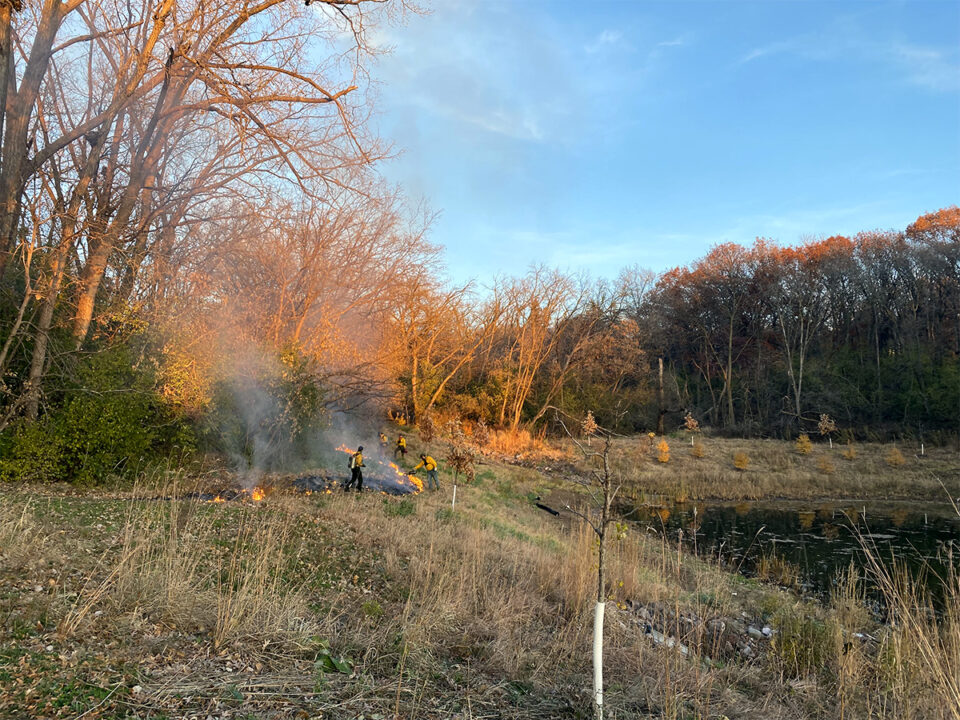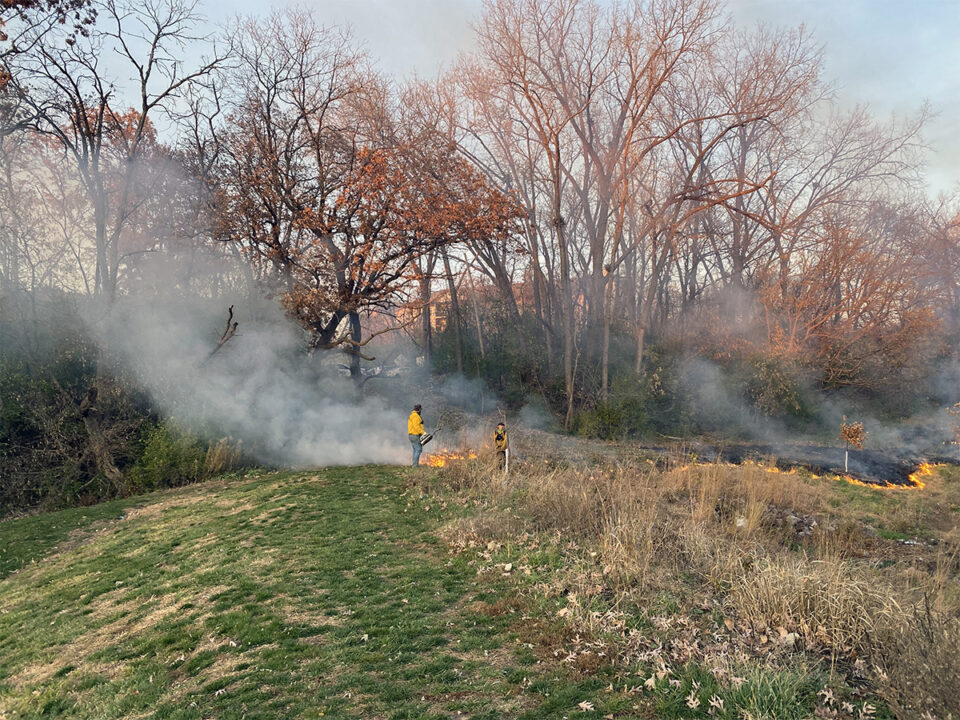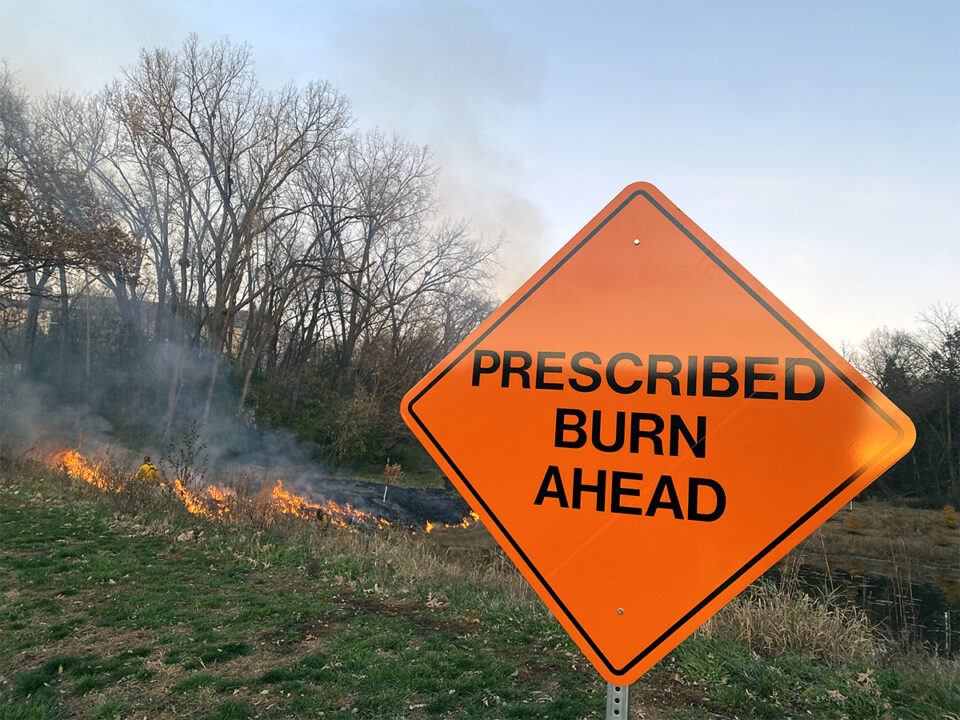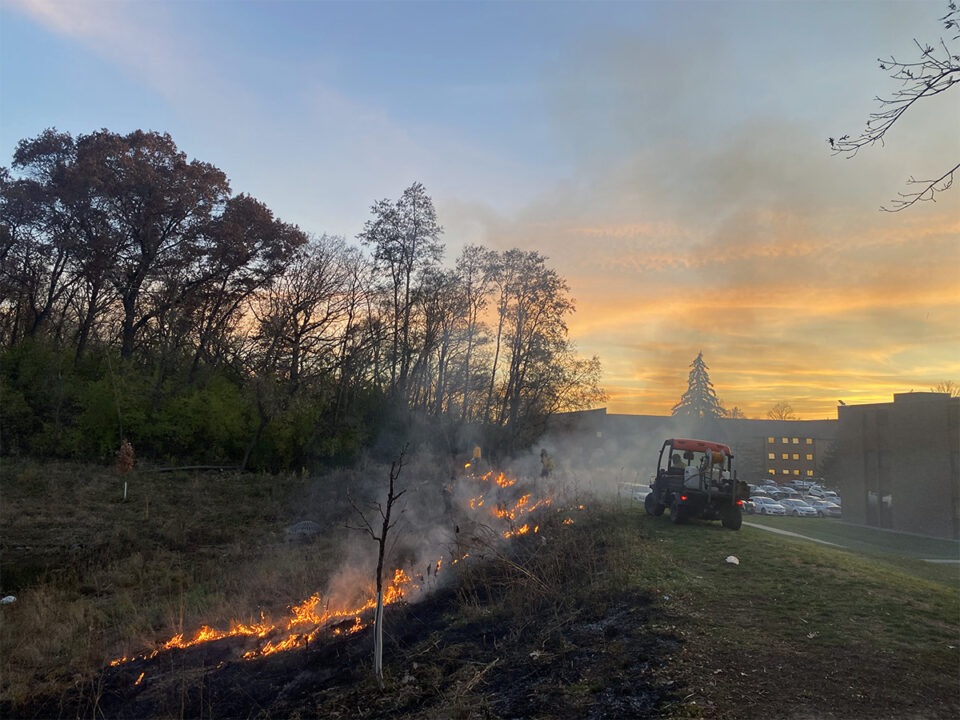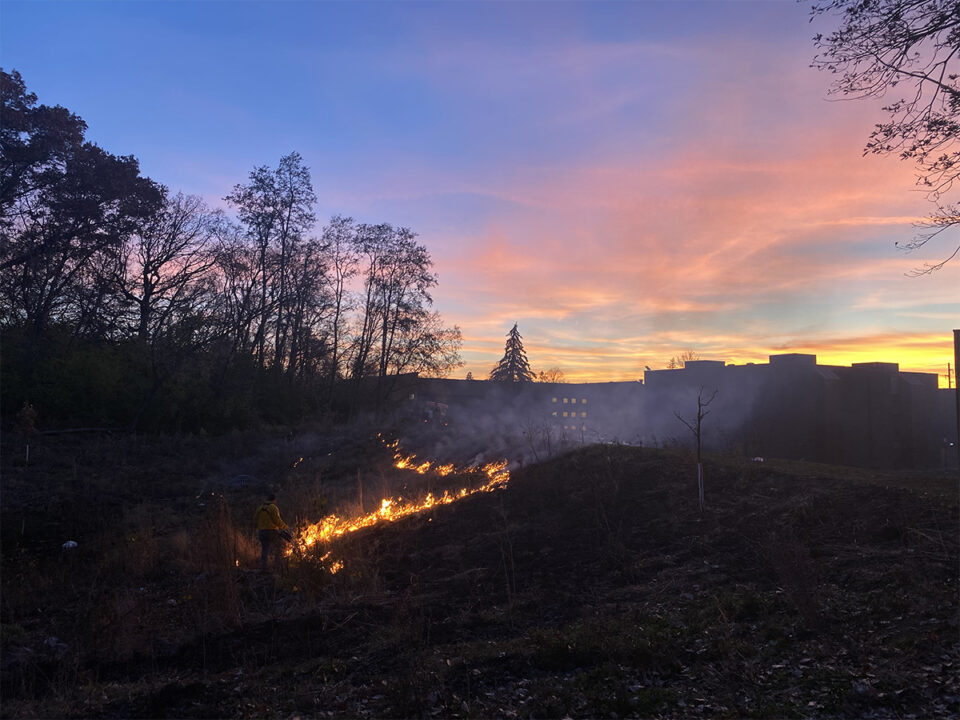Prescribed Burn Helps Seminary Pond Thrive
At a peaceful pond in Lauderdale, Minnesota, the gentle crackle of flames blends with the calm of dusk. The prescribed, controlled burn in late fall has a stunning backdrop of the early-evening sunset. Trained professionals carefully monitor the fire moving slowly across the browned November landscape.
Capitol Region Watershed District (CRWD), the Cities of Lauderdale and Falcon Heights, Ramsey County, and the University of Minnesota recently worked together to make improvements to Seminary Pond to minimize flooding and help remove pollutants like sediment and phosphorus before they flow to the Mississippi River. The State of Minnesota Clean Water Fund, administered by the Minnesota Board of Water and Soil Resources, provided partial funding for the project.
Seminary Pond was built in the mid-1990s by the City of Lauderdale and receives stormwater runoff from a 128-acre subwatershed that extends beyond Lauderdale boundaries and includes parts of Falcon Heights, Saint Paul, and the University of Minnesota. The larger natural area of Breck Woods surrounds the pond.
The recent project improved wildlife habitat by controlling invasive plants and replacing them with native species in and around the pond. Many of the native plants and trees added are doing well, but some unwanted species, like invasive reed canary grass, are creeping in. One way to address the unwanted plants with minimal disruption to the native plants is to do a prescribed burn of the area.
Prescribed burns provide many benefits to habitat restoration. They remove dead plants to make room for new growth, reduce unwanted species, and convert the layer of dead and living plant matter on the surface into available soil nutrients favored by native prairie plants. However, there are different advantages to doing a prescribed burn in early spring and late fall. Many burns to control invasive species are done in the early spring when unwanted species have started growing, but native plants remain dormant. Spring burns can favor the establishment of warm-season grasses.
A prescribed burn in late fall can offer other advantages. Fall burns help encourage native wildflower establishment and control unwanted woody species like Buckthorn, Siberian Elm, and Black Locust. At Seminary Pond, CRWD staff determined that a late fall burn would be beneficial to complete this calendar year. The burn prepares the area for spring growth and helps control encroaching Black Locust shrubs.
After CRWD decided on a timeline for the prescribed burn at Seminary Pond, staff notified the surrounding residents with a mailer and posted several large signs. CRWD hired a professional restoration company experienced in managing prescribed burns of similar sites. Before the day of the burn, they monitored the wind and weather to ensure they conducted the burn during optimal conditions. On the day of the burn, the trained professionals began by setting the boundaries of the burn at the site and slowly working their way inside. They have a burner and extinguishers ready, so the fire spreads as planned.
CRWD staff will return to the site in the weeks following the burn to spread a seed mix of native, shade-tolerant plants that are well-suited to the site. Late fall and early winter are great times to scatter native seeds because the snow will help work the seeds into the soil. The seeds will have a head start as the snow melts in the spring.
CRWD is committed to protecting and improving the water resources of our 40-square-mile watershed and the Mississippi River. Projects like Seminary Pond are an excellent example of a partnership that benefits the local community and water quality of the Mighty Mississippi.
Learn more
-
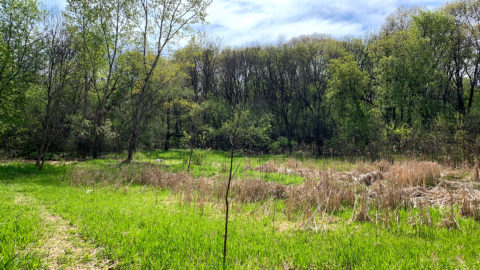
Seminary Pond
Go To Project

